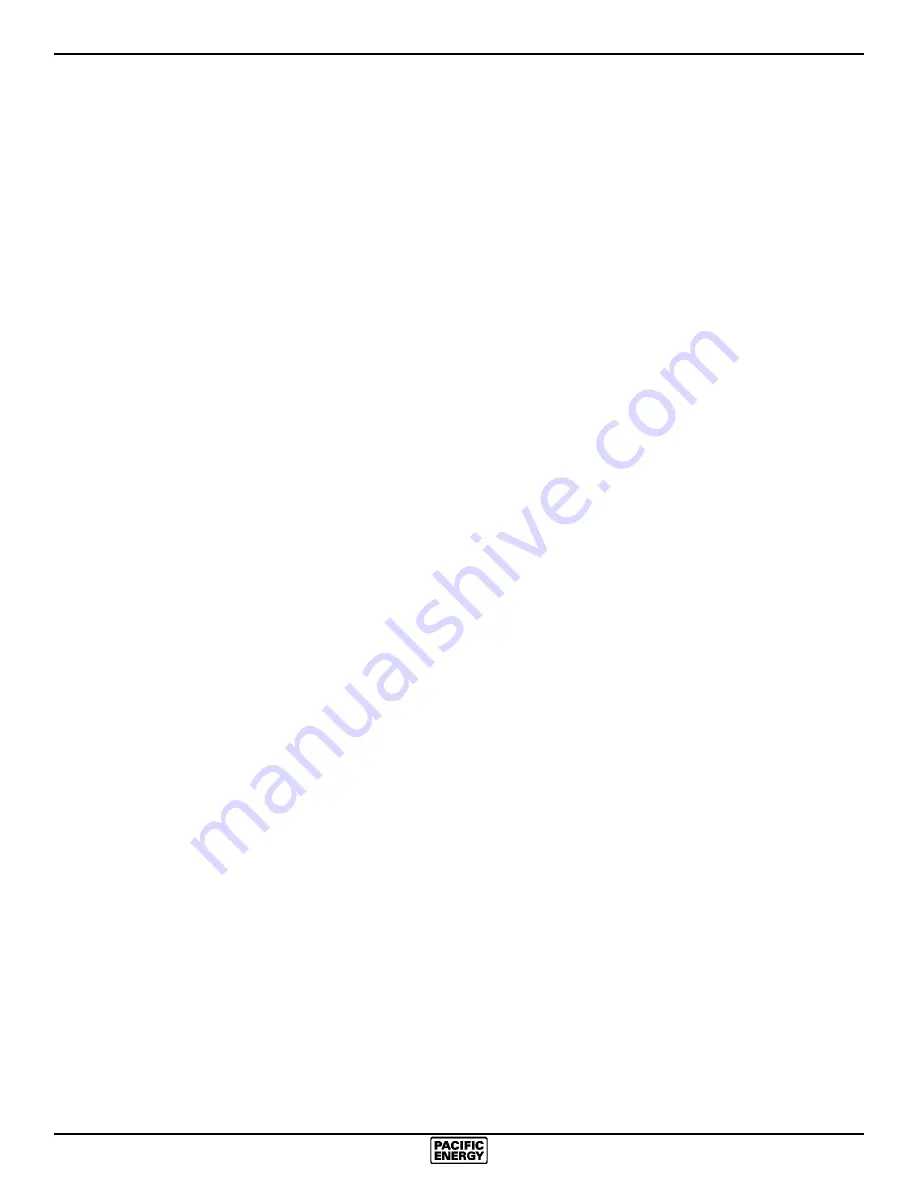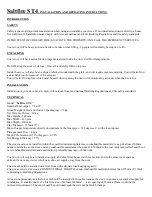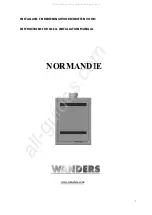
13
SPND.BODYA 161009-24
Operation
Wood Selection
This heater is designed to burn natural wood only. Higher
efficiency and lower emissions generally result when burning
air-dried seasoned hardwoods, as compared to softwoods
or too green or freshly cut hardwoods.
Wood should be properly air dried (seasoned) for six months
or more. Wet or undried wood will cause the fire to smoulder
and produce large amounts of creosote. Wet wood also
produces very little heat and tends to go out often.
DO NOT BURN:
-*Salt water wood
-Coal/charcoal
-Treated wood
-*Garbage/Plastics
-Wet or green wood
-Solvents
* These materials contain chlorides which will rapidly
destroy metal surfaces and void warranty.
Do not burn anything but wood. Other fuel, e.g. charcoal,
can produce large amounts of carbon monoxide, a tasteless,
odourless gas that can kill. Under no circumstances should
you attempt to barbecue in this heater.
How to Test Your Wood
Add a large piece of wood to the stove when it has a good
large bed of coals. It is dry if it is burning on more than
one side within one minute. It is damp if it turns black and
lights within three minutes. If it sizzles, hisses and blackens
without igniting in five minutes it is soaked and should not
be burnt.
WARNING: Do not use grates or andirons to elevate the
fuel. Burn directly on the firebricks. Replace broken or
missing bricks. Failure to do so may create a hazardous
condition.
Your Pacific Energy heater is designed for maximum overall
efficiency at a moderate firing rate. Overfiring is hazardous
and a waste of fuel. Too slow a burn contributes to creosote
buildup and lowers combustion efficiency.
Lighting the Fire
WARNING: Never use gasoline, gasoline-type lantern
fuel, kerosene, charcoal lighter fluid, or similar liquids
to start or ‘freshen up’ a fire in this heater. Keep all such
liquids well away from the heater while in use.
1) Adjust air control to "H" (high) position (pushed to the
far left) and open door.
2) Place crumpled newspaper in the centre of the heater
and criss-cross with several pieces of dry kindling. Add
a few small pieces of dry wood on top.
3) Ignite the paper and close the door.
4) After the fire as established itself, open the door and
add a few small logs. Close door.
5) Begin normal operation after a good coal base exists
and wood has charred.
Normal Operation
1) Set air control to desired setting. If smoke pours down
across the glass (waterfall effect), this indicates you
have shut the control down too soon or you are using
too low a setting. As every home’s heating needs vary
(i.e. insulation, windows, climate, etc.), the proper setting
can only be found by trial and error and should be noted
for future burns.
2) To refuel, adjust air control to "H" (high) position (pushed
to the far left) and give the fire time to brighten. Open
door slowly, this will prevent backpuffing.
3) Use wood of different shape, diameter and length (up
to 19"). Load your wood endwise and try to place the
logs so that air can flow between them. Always use dry
wood.
4) Do not load fuel to a height or in such a manner that
would be hazardous when opening the door.
5) For extended or overnight burns, unsplit logs are
preferred. Remember to char the wood completely on
"H" (high) setting before adjusting air control for overnight
burn.
WARNING: Always keep loading door closed when
burning. If the door is left partly open, gas and flames
may be drawn out of the fireplace stove opening creating
risks from fire and/ or smoke. This heater is not designed
for open door burning, unless a manufacturer supplied
screen is used.
Restarting After Extended or Overnight
Burns
1) Open door and rake hot embers towards the front of the
heater. Add a couple of dry, split logs on top of embers,
close door.
2) Adjust air control to “H” (high) position (pushed to the
far left) and in just a few minutes, logs should begin
burning.
3) After wood has charred, reset air control to desired
setting.
4) When burning at a slow rate for extended periods,
occasionally maintain a strong fire under supervision for
a couple of hours to relieve firebox and chimney deposits
as well as any of the deposits on the glass.
WARNING: This method is not a substitute for regular
chimney inspections and cleaning.
5) To achieve maximum firing rate, set control to “H” (high)
position (pushed to the far left). Do not use this setting
Summary of Contents for Super Insert DESIGN-D
Page 20: ...20 SPND BODYA 161009 24 NOTES...
Page 21: ...21 SPND BODYA 161009 24 NOTES...
Page 22: ...22 SPND BODYA 161009 24 NOTES...










































